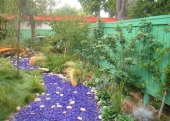J Youngman wrote:Not sure if this is the best section to post this...
Fruit Trenches: Cultivating Subtropical, Russia
I found this very interesting. I never realized this was done on such a large scale so long ago. I've wanted to build a similar style "greenhouse" for a long time. I would love to know how they handled drainage in their trenches.
Society has seen a lot of changes since then. The important work of tending to plants/trees was more valued than it is now: a worker with a full time job was getting enough money to sustain a whole family. A woman would to bake bread every other day, do some sewing. These jobs took a lot longer, being done piecemeal. A shoemaker would work for several days to make a pair of shoes. Same thing for the barrel maker, a seamstress...
When everything is mechanized and automatic, it becomes too expensive to pay someone to build large trenches and walls and espaliers: Human workers have to be paid whereas machines don't and they can work 24/7.
We've seen so many artisanal jobs disappear.
As far as draining the trenches, I'd like to know that too. Since they built these trenches even on gentle slopes, there might have been enough of a slope to divert the worst of the rain around the trenches? (like when you are camping and rain threatens you can make a shallow trench to divert rainwater away from your tent and stay dry) the trenches themselves could have a gentle slope with one end higher than the other, so the water would accumulate at one end of the trench??
Pre-1800, these were the options for lifting water out of where it was not wanted:
Ancient & Early Methods (Pre-1800s)
Shaduf (c. 2000 BC): An early lever system with a bucket on one end and a counterweight on the other, used by Egyptians to lift water from rivers.
Archimedes' Screw (c. 3rd Century BC): A rotating screw within a tube, often powered by hand or animal, that lifts water as it turns, ideal for low-lift drainage.
Chain Pump (c. 200 BC): An endless chain with discs or pots that scoops water up a tube, powered by a waterwheel or hand crank.
The Archimedes screw or the chain pump sound like the most promising, but I'm guessing.








